These were times. When I first launched a system with a graphical interface and did not understand what I saw
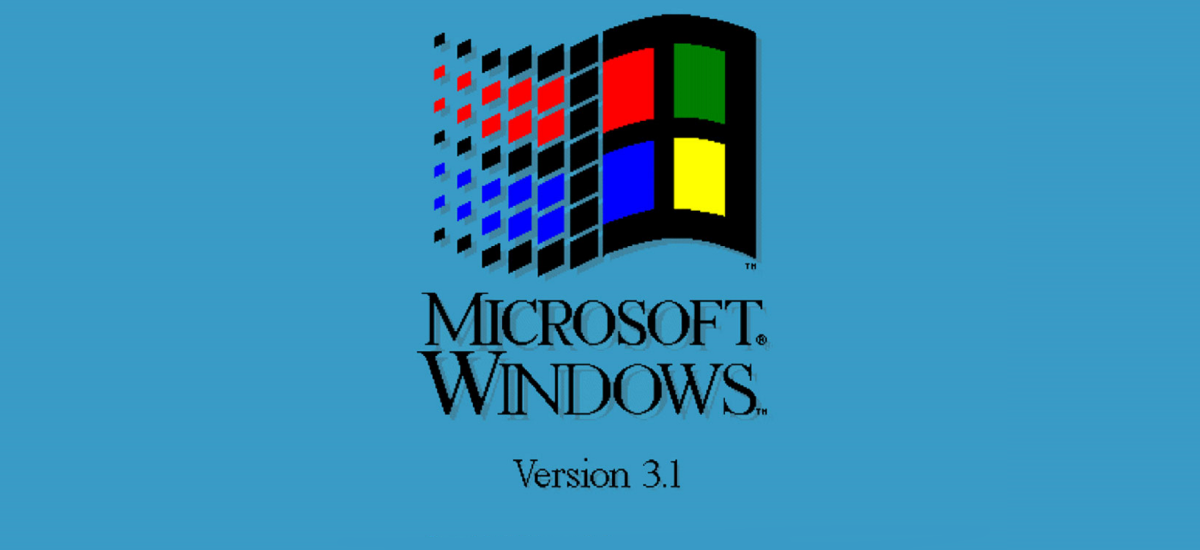
The first OS I used at home was MS-DOS . With time, however, Windows came to my modern PC with a 486 processor. In a form that does not resemble the younger Readers.
I was wondering for a long time whether Windows 3.1 would be a grateful topic for our weekly cycle on digital antiques . After all, it was not the first system with a graphical interface on the market. It was not even the first such system from Microsoft. Ultimately, however, I convinced myself: Windows 3.1 was not only my first contact with the UI based on windows and cursors. He was also the Windows, which finally took root in homes and offices for good, reinforcing the subsequent long-term supremacy of Microsoft in this market.
But why is he? Why Windows 3.1, not - for example - 3.0? What exactly did this system characterize and what could it do? When I first launched it at the age of 10, it served me mainly as a toy for Write, Paint and as a place for playing popular multimedia encyclopedias on CDs. I was too young to understand the convenience offered by him. And the above is just a small part of a larger whole.
Windows 3.1 - introduce yourself nicely to the state.
Windows 3.1 is a 16-bit family of operating environments, originally developed under the code name Janus. On sale, its first representative appeared in April 1992, replacing Windows 3.0. In theory, Windows 95 replaced Windows 3.1 three years later, however, Windows 3.1 gained such an incredible popularity that it was covered by technical support until the end of 2001, and his selected specialized subversions until November 2008.
[caption id = "attachment_851735" align = "alignnone" width = "640"] 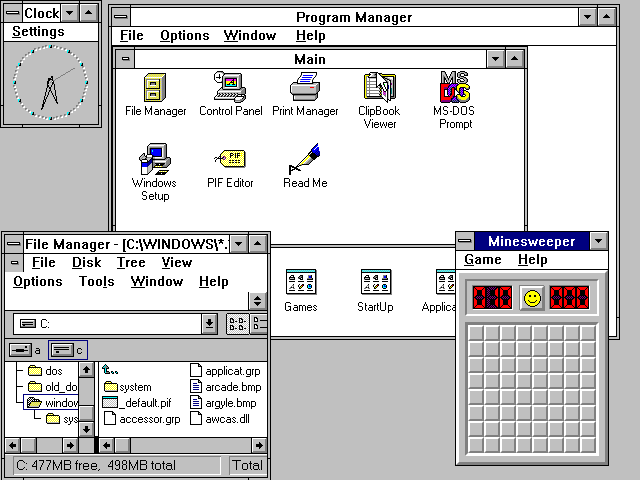 This was the "desktop" Windows 3.1. There is no Start Menu, no taskbar. There are only windows. [/ Caption]
This was the "desktop" Windows 3.1. There is no Start Menu, no taskbar. There are only windows. [/ Caption]
The foundation of the system was invariably MS-DOS, although Windows 3.1 was undoubtedly much more than just an overlay on Microsoft's command line. It was only Windows NT (from which Windows XP and its successors originate) that broke the last ties with DOS, but this is a story for a different time.
Breaking with the past and flicking towards Apple are probably the main reasons for the success of Windows 3.1.
Windows 3.1 was the first Microsoft system to support TrueType fonts. This is Apple's free alternative to paid PostScripta. In combination with the Adobe Type Manager support that was already present in Windows, the Windows PCs suddenly became suitable for DTP and other industries using the computer as a working tool for word processing. Until now, Apple Macintosh computers played the role of an almost monopolist.
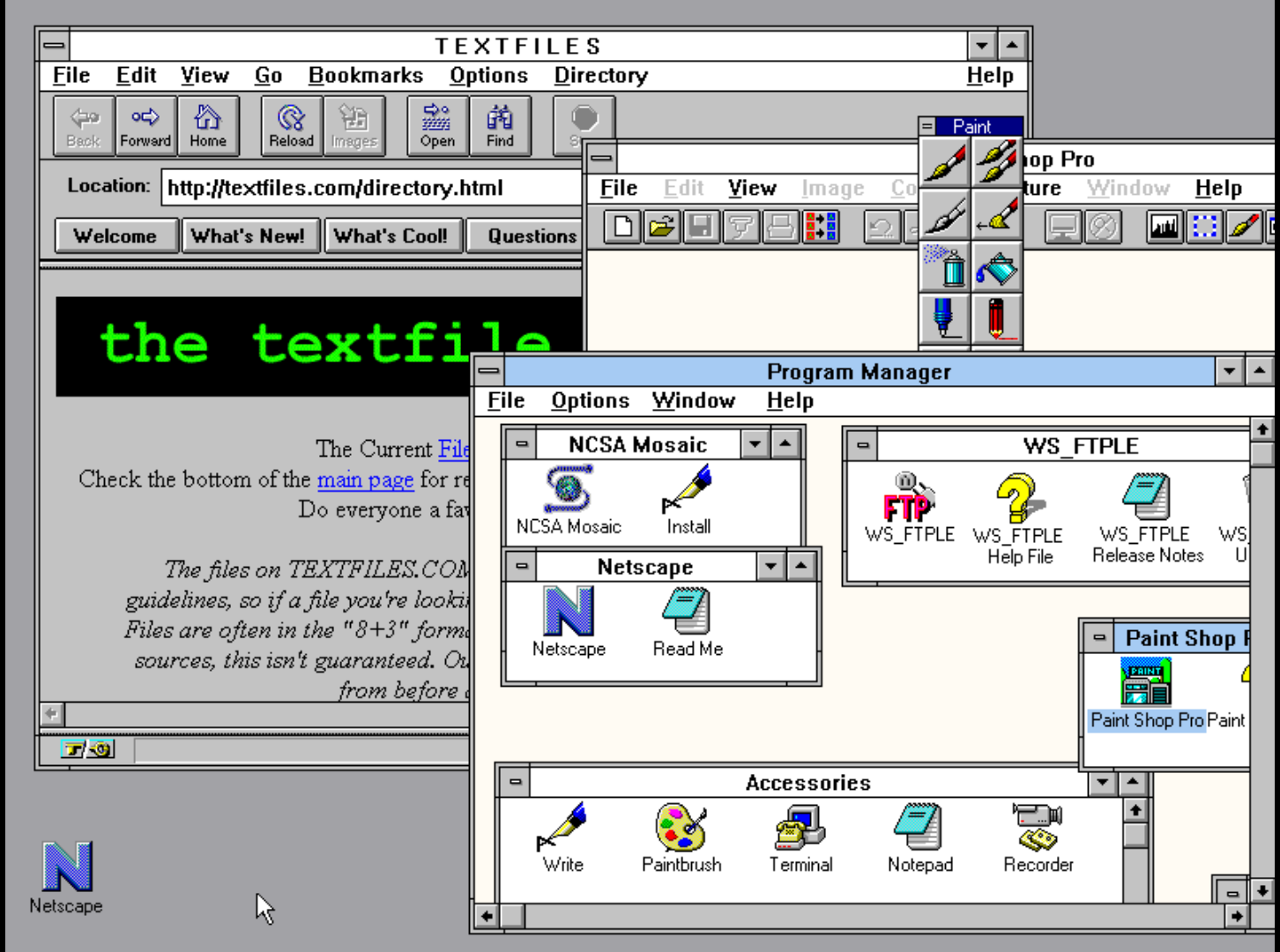
The second important element of Windows 3.1 was the abandonment of compatibility with older Intel processors while maintaining partial compatibility with applications for previous versions of Windows. More specifically, it is about abandoning the work in real mode, required even by an Intel 8086 processor. Switching to a protected mode (Intel 286 and later) enabled the work in Windows in multi-tasking mode and ensured applications access to more memory. You had to give up some clients to make Windows a modern system. This move, of course, paid off.
Larger field for applications.
Not only Windows applications, but also DOS applications gained. The quite revolutionary virtual machine introduced in Windows 3.0 has been improved. 386 Enhanced Mode, because this solution I mean, virtualized within Windows the DOS environment so that the working DOS application does not stop the work of other applications. And to be able to run more than one DOS application at the same time. Well, it was just modernity! Windows 3.1 introduced Windows mouse support to these DOS applications and provided them with access to the system clipboard.
Application icons have also gained in importance. For the first time in the history of Windows, you could express actions by moving them to another location. For example, moving the file icon with text to the printer icon resulted in running the print.
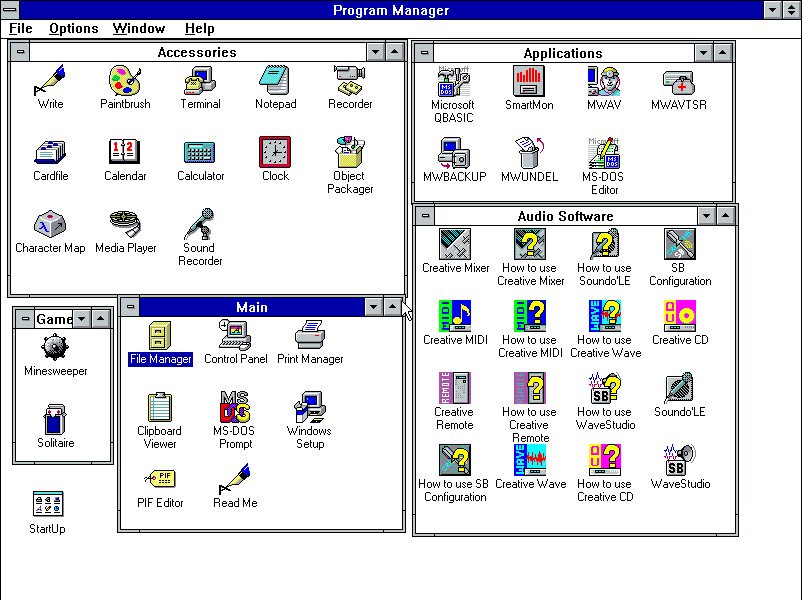
Applications for Windows 3.1 could refer to as much as 16 MB RAM - if someone had such a cosmic amount - and the system in theory used as much as 4 GB RAM, although in practice no more than 256 MB. Well, there was one common place to store the settings of all Windows applications.
It was Windows 3.1 that proposed a common, database Windows Registry, which as a concept was a great idea. Unfortunately, no one at Microsoft predicted that for the next years the application developers will create very low quality installers, this registry is cluttered. The registry is a great tool and a big help for corporate IT administrators and more advanced users. The side effects of its defects have been eliminated many years later, only in Windows Vista.
Windows 3.1 is also a great thing for the Poles.
Because it was this version of Microsoft's operating system that was the first (in the edition of Windows 3.1 for Central and Eastern Europe) to introduce Polish diacritics. And so the Polish letters, without which the phrase "Zozółć męślego sam" would lose its already dubious sense. Unfortunately, Microsoft at the time was not promoting standards. Instead of entering the coding of Polish characters in the ISO-8859-2 standard, he created his own: Windows-1250. Of course, with nothing incompatible and trying to strengthen the dominant position on the PC market.
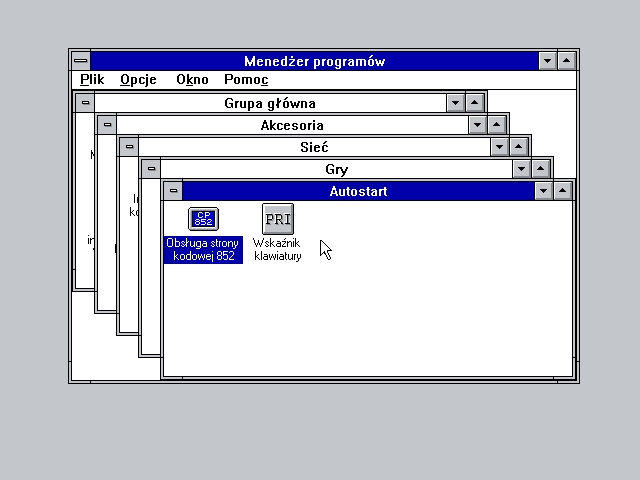
Windows 3.1 for Central and Eastern Europe was not the only subversive of this system. There were also patches 3.11 and Windows 3.2 with added Chinese language support patched from the original errors. There was also Windows for Workgroups 3.1 and 3.11, which introduced native support for computer networks: SMB and IPX, which facilitated the sharing of data in companies.
The flick of Apple's nose has had the desired effect. Microsoft decided on the next one.
The PC with Windows 3.1 has become a much more affordable alternative to office work and text for expensive Macintosh. Microsoft went after the blow and offered an alternative to the then-cost $ 200. Apple QuickTime package. He added to the Apple computers the ability to edit and encode video files. Microsoft added something similar to Windows 3.1, but for free.
The free update of Video for Windows did not contain a full set of tools for digital video. However, it provided application developers - free or paid - with a certain technique in Windows, which was called Audio Video Interleave (AVI). And a documented API to manipulate video files. Appropriate applications, of course, were created, taking prosumers from another reason to buy a Macintosh.
Windows 3.1 also got a free extension introducing the stylus (Windows for Pen Computing) and WinG, which can be considered as a very early progenitor of DirectX - a convenient API for developers of games and applications, making it easier to squeeze the maximum possibilities, especially graphics, from the equipment owned by a client. Windows 3.1 also gained some time partial compatibility with Win32 applications - so the future Windows standard, although their number was very limited due to the fact that Windows 3.1 is a 16- and not a 32-bit operating system.
Three million licenses in two months.
https://www.youtube.com/watch?v=Y7jlEghfk3I
Today it sounds like a failure, but in those days these numbers were treated as a big sales success. Windows became the year of the release of version 3.1 the most popular operating system with a graphical user interface (a significant distinction!) In the world. He also assured Microsoft in the same year the title of "The most innovative American company" according to the Forbes magazine.
He stayed with us for many years, although I personally did not use it much. I was too young to appreciate his advantages at work. And the games mainly bother - it was only memory, while most games were written for MS-DOS. Windows 3.1, however, had an incredibly long life. The latest implementation, which I managed to find, comes from 2008! He arrived on the Virgin Atlantic and Quantas planes as a system for handling multimedia systems in passenger seats. 16 years after the premiere!
Windows 3.1 put Microsoft on the leader in the world of personal computers. However, its position on this spot was strengthened by another platform. Windows 95 is the first - a decisive and very firm - step in the pursuit of absolute monopolization of the PC market. But this is a story for another occasion ...
These were times. When I first launched a system with a graphical interface and did not understand what I saw
Comments
Post a Comment